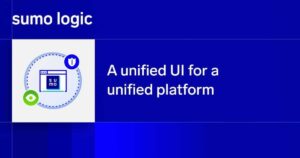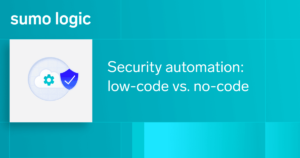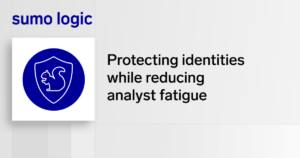Building an effective security strategy in organizations today requires the right combination of experts, processes, tools and technologies. Luckily, there are many different ways in which you can organize them to fit your company’s needs, like SOCs and CSIRTs.
The two types of teams most often mentioned today are Security Operations Centers (SOCs) and Computer Security Incident Response Teams (or CSIRTs). SOCs and CSIRTs have distinctive roles and responsibilities, so deciding which one is better for your organization’s security program isn’t always easy. This blog post will focus on explaining their main objectives and how they differ in structure, which may help you to decide which one is more suitable for your organization’s internal infrastructure and strategy, especially if you are looking to set one up in the near future as your business expands.
What is a SOC?
The term SOC bears the connotation of an environment designed specifically to defend corporate data and networks, and it can be used to describe the facility where carrying out security tasks takes place or the people who are responsible for that.
A SOC is the “brain” of a security organization, as it acts as the center of all roles and responsibilities, with the main goal of protecting information within the organization. Its main tasks are:
-
Prevention
-
Detection
-
Incident management / response
-
Reporting
-
Anything that involves managing and protecting information within the company
Furthermore, the SOC also monitors people, technologies and tools, and processes involved in all aspects of cybersecurity. Oftentimes, companies have a SOC before they decide to establish a separate CSIRT. The end objective of every SOC is to monitor and take care of every cyber activity that takes place and ultimately ensure the organization is protected against any type of attack.
The SOC is also responsible for incident response if there is no formal CSIRT established within the organization. If there is, the SOC helps the CSIRT in responding faster and more efficiently to a cyber threat.
The SOC is responsible for the following:
-
Monitoring the security of users, systems, and applications
-
Prevention, detection, and response to security threats
-
Creating and managing procedures
-
Integration of security systems with other tools
What makes a SOC unique and different from other units within the organization is its centralized role with a strong focus on combining techniques, skills, and technology, by utilizing tools to increase the protection of the company against threats. It’s also important to underline that even though incident prevention and management is not its specialty, a SOC may still cover these events as well, being a department that covers all things related to cybersecurity.
Computer Security Incident Response Team (CSIRT)
CSIRT is a centralized department within an organization whose main responsibilities include receiving, reviewing, and responding to security incidents. CSIRTs may work under SOCs, or function individually, depending on the organization’s needs and structure.
The main goal of a CSIRT is to minimize and control the consequences from an incident. It’s not just addressing the attack itself, their role involves communicating with boards, executives, and clients about the incident.
Some of its main responsibilities include:
-
Prevention, detection, and response to security threats
-
Ranking alerts and tasks
-
Investigating and conducting forensics on incidents
-
Coordinating strategies
What do CSIRTs do?
The basis of every CSIRT is providing incident management. The CSIRT is the central point of contact in the event of a security incident. Depending on how fast a CSIRT team responds to an incident, it can limit the damage from the incident by providing rapid response and recovery solutions. This ensures the workflow is uninterrupted and lowers the overall costs.
Incident management presupposes three functions: reporting, analysis and response. With this being said, the CSIRT activities usually involve the following:
-
Understanding incidents – CSIRTs must be aware of the nature of the incident and the consequences that might arise from it. A repository helps teams gain insights of the patterns of a certain cyber attack and this could lead to future activities that could prevent the occurrence of such attacks.
-
Handling negative impact – CSIRTs carry out elaborate research of a certain problem and recommend solutions for it.
-
Assist other departments – CSIRT teams distribute alerts across the organizations on the latest threats and risks.
-
Compose security strategies
Does my organization need a CSIRT?
The CSIRT within an organization may be a formal unit or an ad-hoc team, depending on the company’s needs. If your organization is not facing cyber threats on a regular basis, the need for a CSIRT might not be as emphasized as for larger organizations, or companies in high-risk industries, such as healthcare, finance or government. In industries such as these, responding to threats happens daily and there’s a need for a formal, full-time CSIRT.
With a security information and event management (SIEM), such as Sumo Logic’s Cloud SIEM, a CSIRT may not be necessary.
Whatever the needs of your organization, don’t forget that a CSIRT team will evolve with time. What might start as an ad-hoc team may develop into a fully functioning department as the business expands and progresses.
Final thoughts on SOCs and CSIRTs
Regardless of the final choice, which will depend on a number of individual requirements and factors, (including but not limited to the size of the organization, the number of threats it faces, the industry and the company’s security program maturity), don’t forget that whatever team is established, it is always important to clearly define roles and responsibilities, have efficient processes in place that can be automated and implement the right tools and technologies that will help your team do their job more effectively. If set up correctly, SOCs and CSIRTs will facilitate the organization to respond to all security alerts and react faster to the ever-evolving cybersecurity incidents.



